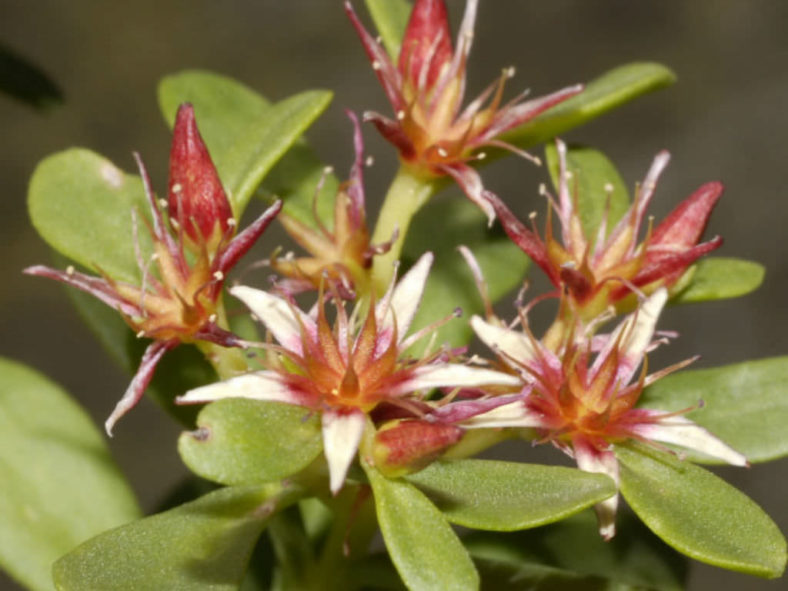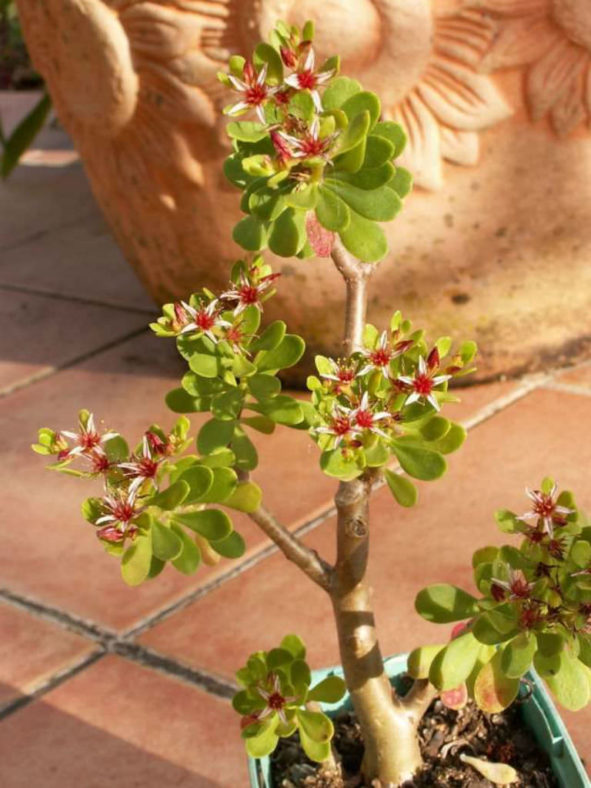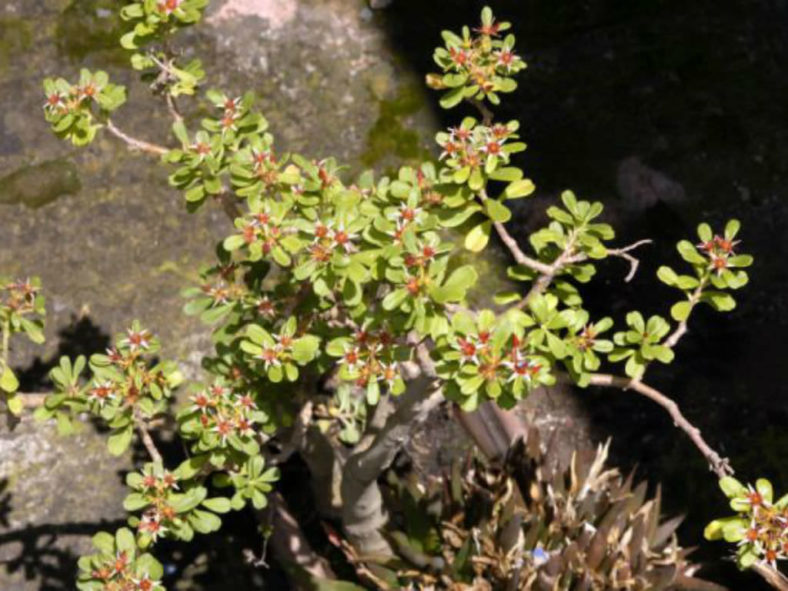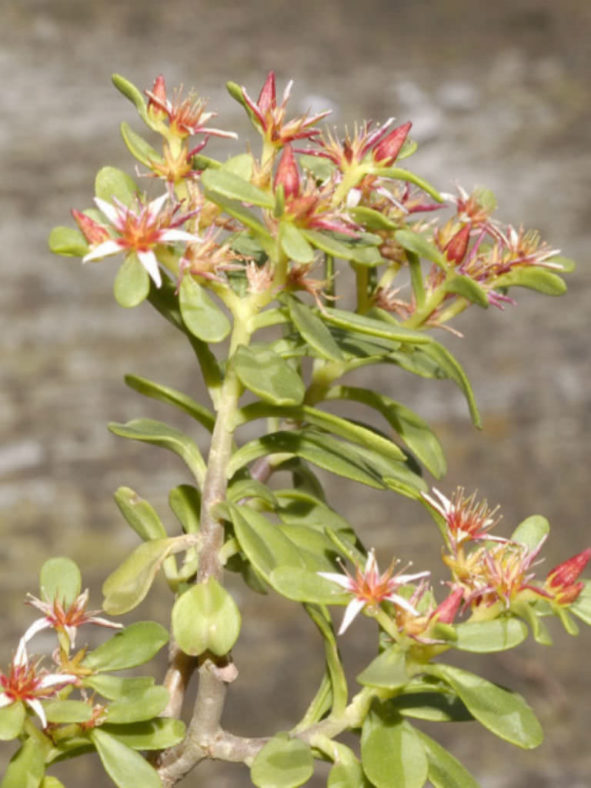Scientific Name
Sedum oxypetalum Kunth
Common Name(s)
Dwarf Tree Stonecrop
Synonym(s)
Sedum arborescens, Sedum peregrinum
Scientific Classification
Family: Crassulaceae
Subfamily: Sempervivoideae
Tribe: Sedeae
Genus: Sedum
Etymology
The specific epithet "oxypetalum" (pronounced "oks-ee-PET-al-um") means "having pointed petals" and refers to the sharp, lance-shaped petals of the flowers of this species.
Origin
Sedum oxypetalum is native to Mexico.
Description
Sedum oxypetalum is a succulent shrub with many-branched stems that have flaking bark and papillose twigs bearing green, finely papillose leaves with a small notch at the tip. It can grow up to 3.3 feet (1 m) tall. The fruiting branches are deciduous with a distinct, predefined abscission layer. The leaves are oblanceolate or obovate, measuring up to 2.4 inches (6 cm) long and 0.8 inches (2 cm) wide.
The fragrant, star-shaped flowers are white with a pinkish-apricot center. In summer, they appear in cymes with 3 or 4 branches.

How to Grow and Care for Sedum oxypetalum
Hardiness: USDA hardiness zones 9a to 11b: from 20°F (-6.7°C) to 50°F (10°C).
When growing Sedums, keep in mind that these plants need very little attention or care. They will thrive in conditions where many other plants thrive, but do just as well in less hospitable areas. They are ideal for that part of your yard that gets too much sun or too little water to grow anything else. A common name for Sedum is Stonecrop because many gardeners joke that only stones need less care and live longer.
Sedum is easy to propagate. For shorter varieties, laying the plant on the ground where you want it to grow is usually enough to start it there. They will send out roots from wherever the stem touches the ground and the root itself. If you would like to ensure further that the plant will start there, you can add a very thin covering of soil over the plant.
For taller varieties, you can break off one of the stems and push it into the ground where you want to grow it. The stem will root very easily, and a new plant will be established in a season or two.
See more at How to Grow and Care for Sedum.
Links
- Back to genus Sedum
- Succupedia: Browse succulents by Scientific Name, Common Name, Genus, Family, USDA Hardiness Zone, Origin, or cacti by Genus
Photo Gallery
Click on a photo to see a larger version.


